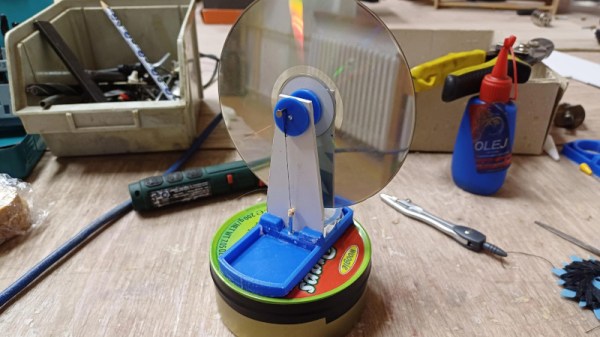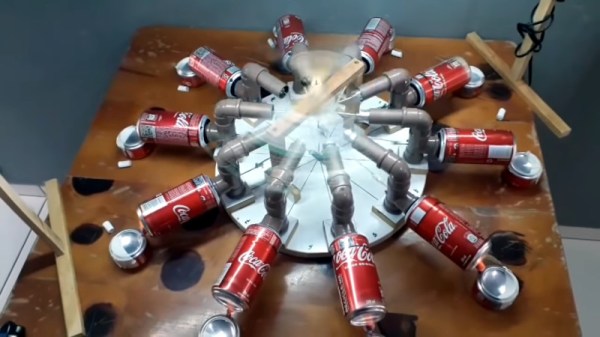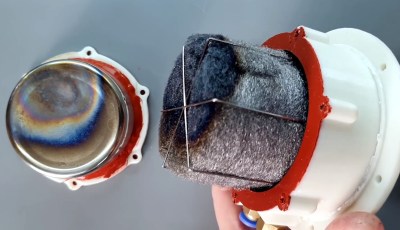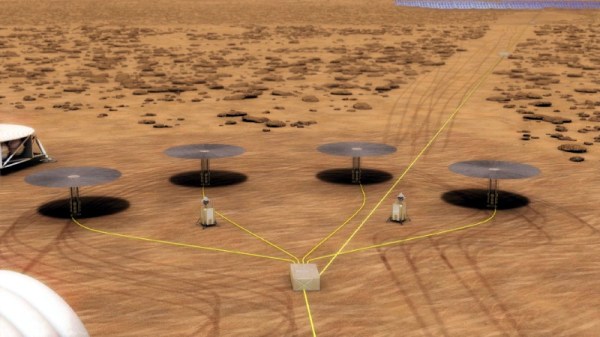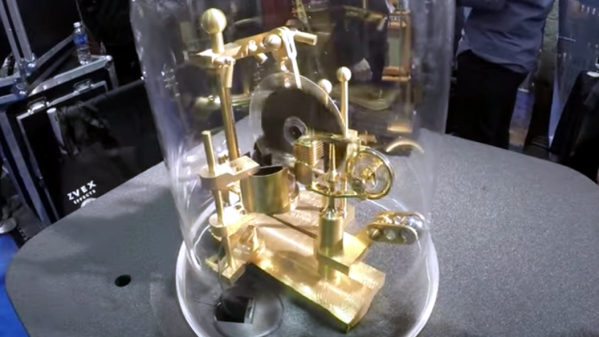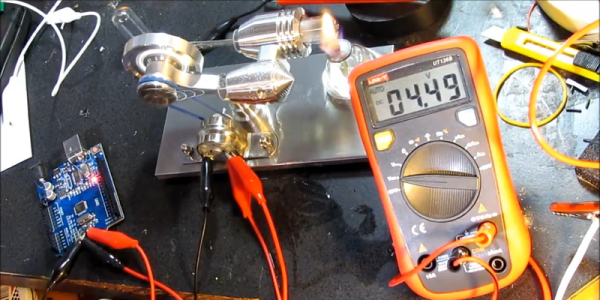The model Stirling engine is a staple of novelty catalogues, and we daresay that were it not for their high price there might be more than one Hackaday reader or writer who might own one. All is not lost though, because [jirka.luftner] has posted one on Instructables which eschews the fancy machined brass of the commercial models and achieves the same result with an array of salvaged parts.
The main cylinder is a former apple drops tin with a cardboard displacer, and the CD/DVD flywheel is mounted on either a 3D printed or cut out frame with the secondary cylinder cut into it. A diaphragm for the secondary cylinder is taken from a rubber glove, and the cranks come courtesy of bent wire.
A slight mystery of this design is that it appears not to have a regenerator, or heat store. This usually lies in the path between the two cylinders to improve efficiency by taking the heat from the air as it passes in-between the two, and returning it when it goes the other way. We’re guessing that on an engine this small it’s the tin itself which performs this function. Either way this is a neat little engine that shouldn’t break the bank.
If this has whetted your appetite, you’ll be pleased to hear it’s not the first Stirling engine we’ve seen made from what was lying around.

